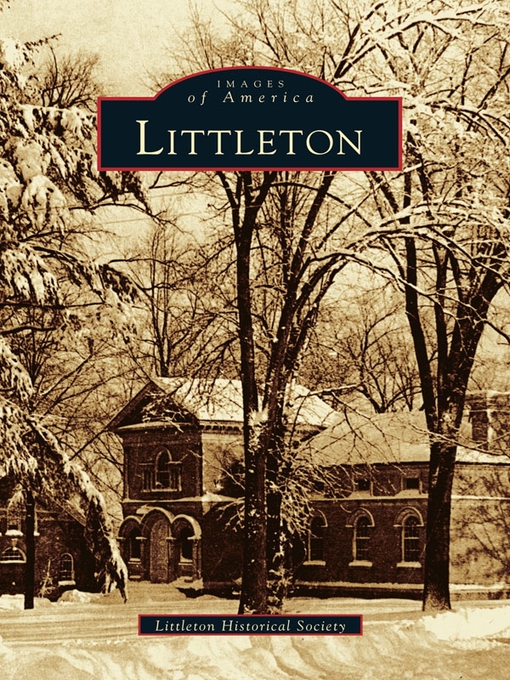Through vintage photographs, many never before published, Littleton connects the current generations with the town's past. Vintage photographs of homes that have changed in appearance or have been destroyed for expansion recall a time of farmhouses and open fields. The book also follows the growth of Littleton, including the emergence of the Conant-Houghton Company and the depot area, as well as the Long Lake and Lake Warren resorts.
- Read-Along eBooks for Children
- Get Hooked on a Series- eBook
- Winter Reading
- eBook Shorts: Your Favorite Stories, but Shorter
- Percy Jackson Collection
- Graphic Novels & Comics
- Romance in the Middle, Ages That Is
- Living on the Edge
- Is It True Dukes Have More Fun?
- Danielle Steel eBooks
- True Stories of World War II
- Biographies of Early Americans - eBooks
- Shifting Sands
- See all
- Read by the Author
- Short Stories for Short Commutes
- Have You Listened to the Most Popular Titles in the Collection?
- Winter Listening
- Percy Jackson Collection
- Animals on Audiobooks
- Audiobooks the Whole Family Will Enjoy...
- Audie Award Winners
- Oldies But Goodies
- Get Hooked on a Series- Audio
- Audiobooks You Might Have Missed
- Listen and Learn
- Listen & Learn: Science Nonfiction
- See all
- 2021 Library Reads
- 2022-2023 Great Stone Face Short List
- 2022-2023 Isinglass Award Short List
- 2022-2023 Flume Award Short List
- 2018-2022 Ladybug Award Nominees
- Romance Award Winners
- 2020 Library Reads
- Edgar Award Winners
- 2019 Library Reads
- Sci-Fi and Fantasy Award Winners
- 2018 Library Reads
- Book Shimmy Awards
- 2017 Library Reads
- See all
- Travel Magazines
- News Magazines
- Heath & Fitness Magazines
- Gardening and Outdoor Living Magazines
- Popular Magazines
- House and Home Magazines
- Tech and Gaming Picks
- Magazines for History Lovers
- Crafts & Hobbies Magazines
- Food & Wine Magazines
- Delving Into Your Devices
- Magazines for Science Enthusiasts
- Hobby magazines
- See all

